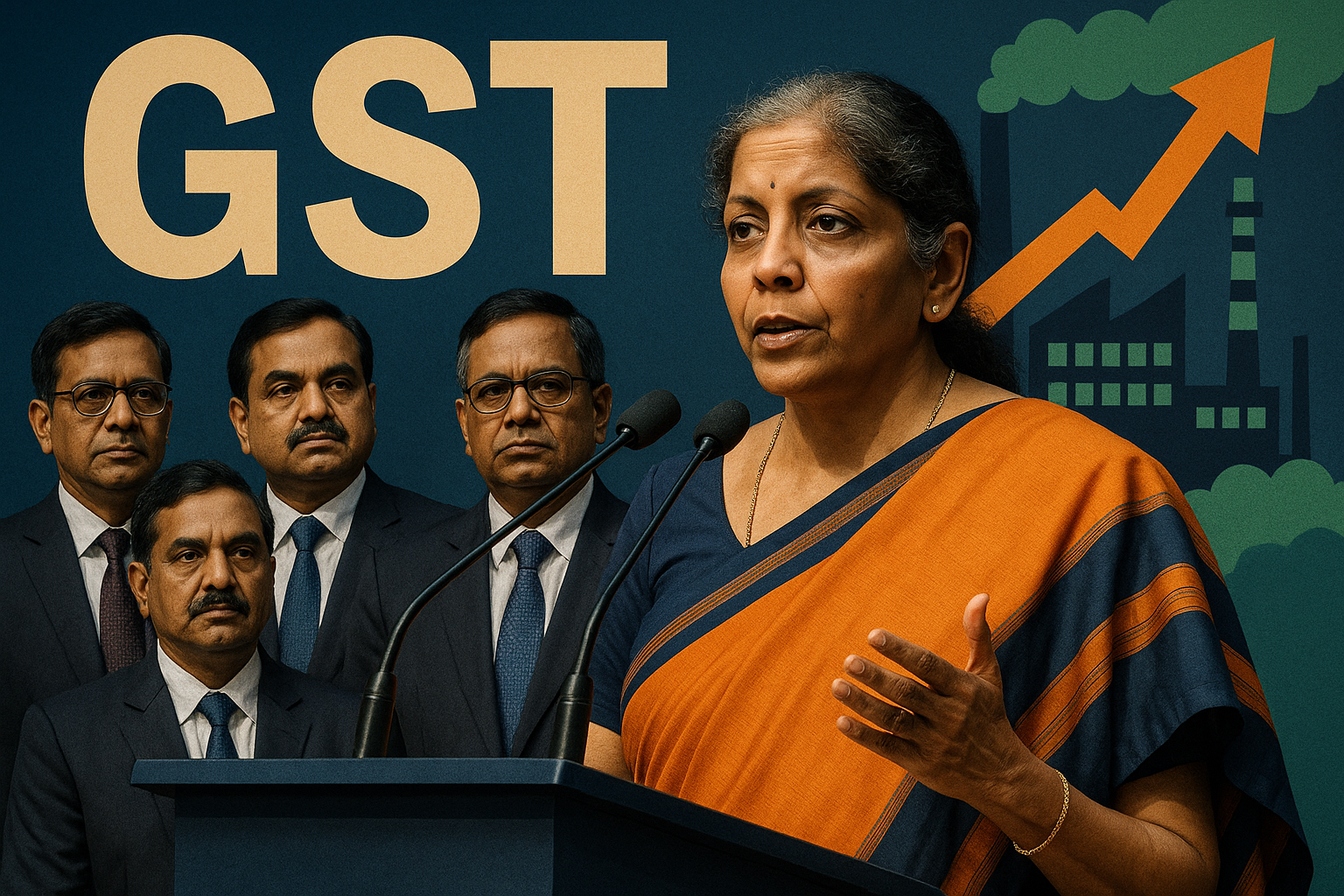Finance Minister Nirmala Sitharaman has urged Indian industry to step up investments and expand capacity, stressing that the government has delivered on critical reforms. Speaking at the IFQM Symposium, she highlighted measures like GST rate rationalization, FDI liberalisation, and improved ease of doing business. With reforms expected to leave ₹2 lakh crore of extra cash in the economy, Sitharaman called on India Inc to seize the moment. Her message reflects the government’s push for private capex to complement its own record capital expenditure.
Core Development
Sitharaman told industry leaders that the government has acted decisively on reforms demanded by businesses. From tax simplification to MSME support, she argued that industry now has fewer reasons to delay investments. She invited corporate leaders to engage with the government year-round, not just during the Budget process.
The government projects its capital expenditure at ₹11.21 trillion for FY26, with spending already up 33% in the first four months. However, surveys show private capex remains subdued, expected to fall 26% year-on-year to ₹4.89 lakh crore in FY26.
Key Drivers / Issues
The minister’s remarks come against the backdrop of:
Lagging private capex despite strong government investment.
Global uncertainties, including trade shifts and tariffs, which make corporates cautious.
Expectations that reforms, including GST adjustments, will inject ₹2 lakh crore liquidity into the economy.
Stakeholder Impact
For industry, the government’s push is a direct call to accelerate capacity building and job creation. MSMEs gain from SIDBI’s physical presence in clusters, ensuring easier financing. For the economy, stronger private investment would amplify growth momentum already supported by public spending.
Industry & Policy Reactions
Tata Sons Chairman N. Chandrasekaran said the opportunity is “enormous,” noting global supply chain shifts in India’s favour. He stressed that without private investments, India risks missing its growth window. Ratings agencies like S&P Global remain cautiously optimistic, projecting $800–850 billion in private investments over five years but expecting capacity addition only gradually.
Challenges Ahead
Private investment continues to trail nominal GDP growth. Corporates remain cautious due to uncertain global conditions, shifting tariffs, and volatile energy markets. Unlocking private capex will require not just liquidity but confidence in sustained demand.
Strategic Outlook
India’s public capex momentum is clear, but private investment remains the missing link. Sitharaman’s message reflects urgency: the government can create conditions, but industry must deliver expansion. If businesses respond, India could enter a new cycle of growth powered jointly by public and private investment.
Why This Matters
Private capex is vital to sustain India’s growth story. While government spending provides a foundation, broad-based private investment will ensure jobs, capacity expansion, and resilience. Sitharaman’s call is a reminder that reforms and liquidity mean little without corporate action.












